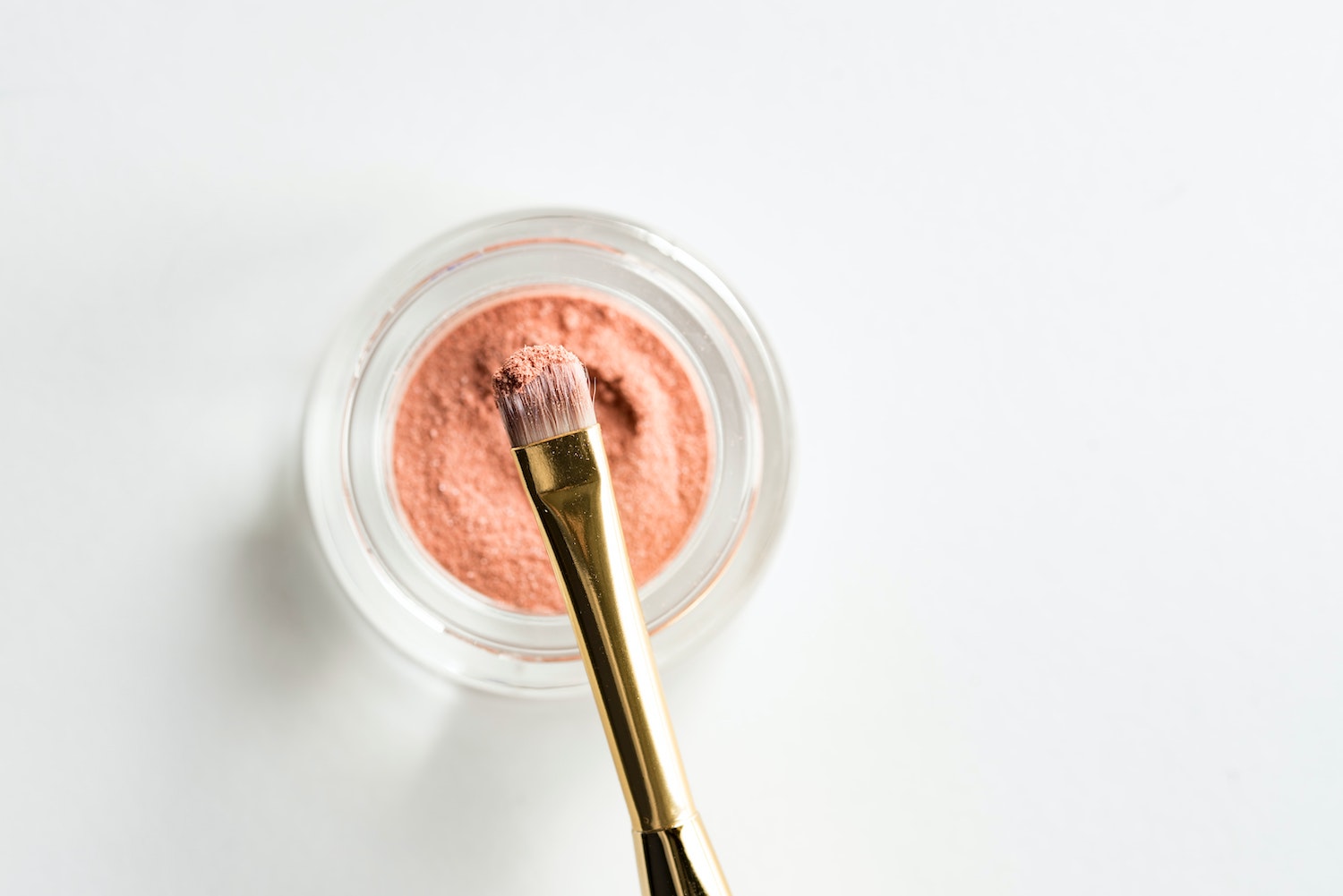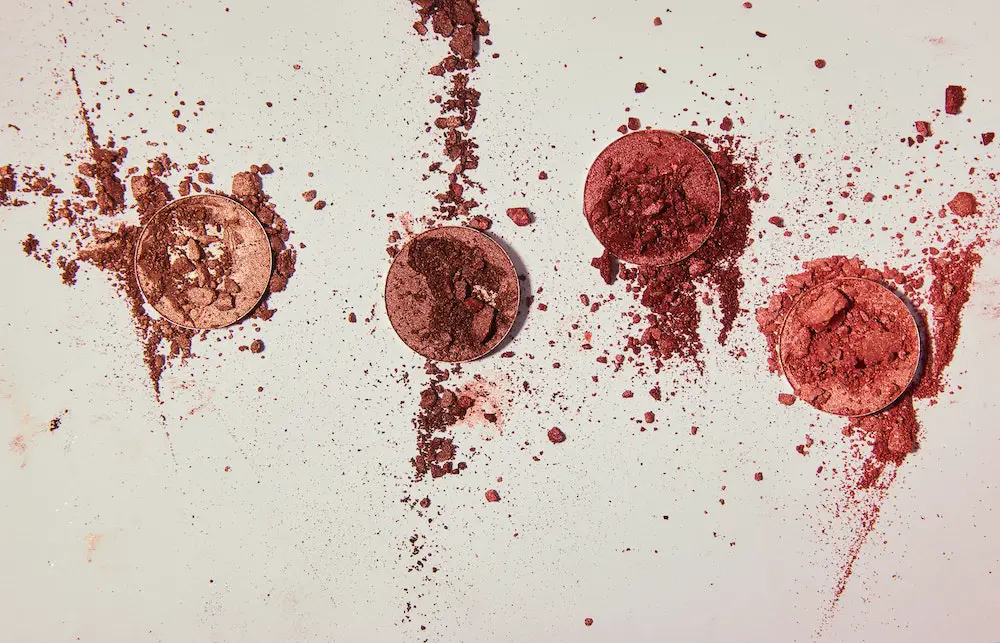Mica is the perfect example of a cruelty-free and vegan ingredient that is rarely ethical. Your mind will be blown when you realize how much blood is shed by children before this shiny mineral makes its way into your cosmetics. Here’s the deadly truth about mica.
Mica is technically a cruelty-free and vegan mineral. However, it is commonly associated with corrupt mining methods that use illegal child labor. The process is so unethical, dangerous, and cruel – it cannot fit the vegan philosophy.
We all want our cosmetics to give us a healthy glow, but we always must ask ourselves, at what cost? With mica – the cost is often blood spilled by a child.
An estimated 20 000 children are working illegally to mine mica from just one region in India alone. Sadly, some don’t survive the day in these life-threatening working conditions.
The problem is that these atrocious living standards are still rife in third-world nations rich in natural resources, so the cycle perpetuates.
It’s up to us to make better choices – but how?
Where can we find ethical mica? Does such a thing even exist? And what alternatives can we choose instead?
Is Mica Cruelty-Free?
If we’re using the technical definition of cruelty-free (meaning something not tested on animals), then yes, mica is cruelty-free.
But is it ethical (or free of all cruelty)? For the most part – no.
Unfortunately, up to 50% of the world’s mica comes from India, where mica mining is unregulated and collected from illegally active mines.
Young kids are often solicited for the job because their little bodies fit perfectly in the narrow holes and shafts you need to climb through to get into the mines.
It’s common for these children to suffer from cuts, scrapes, and broken bones since nothing is regulated. Years of exposure to dust and microscopic mica shards can have long-term lung damage or scarring.
The conditions are dire, with much of the work being done in the scorching sun with temperatures often going above 35°C. Most of these children often don’t have shoes or protective footwear, or gear like helmets and reflective vests.
The most frightening part of this process is that if the unsupported tunnels cave in – it can result in the miners (children) dying.
So why are we risking children’s lives to mine this mineral? Is it really that special?
What is Mica?
If you haul out your makeup bag and grab your daily cosmetics – chances are that the products you love have mica in them. What is this stuff we lather on our faces?
Mica is a naturally occurring mineral with a pearly luster that comes in various opalescent shades.
There are different types of mica used for various purposes. Longer ‘sheet’ deposits have insulative and elastic qualities that are valuable for electronics or construction. While smaller pieces, often called flake mica or ground mica, are commonly used in cosmetics.
Mica is what makes the magic happen in all shimmery cosmetics. But it’s not just the icy sparkle of a y2k eyeshadow that could contain this precarious ingredient.
We can bet that almost anything with an iridescent gleam probably has mica. For example:
The longer sheet mica is also used in countless everyday products like:
Regarding global usage, this report says that the electronic industry uses approximately 26% of mica, paint follows that with 24%, then construction uses about 20%, followed by the beauty industry coming in at 18%.
Next time you go shopping and suspect a product has mica in it, look out for alternative names like sericite or CI 77019.
With such a global demand for mica, surely there must be an excellent way to track where it comes from and how its sourced?
Our research shows otherwise.
Why is Mica Mining Unsustainable and Cruel?
While mica is mainly found in India, it is also sourced from China, Brazil, Belgium, America, and Madagascar.
Here’s the catch – collecting mica isn’t always legal.
The Indian and Madagascan governments prohibit mica mining in certain areas for land conservation purposes. Mica is not a renewable resource, and extraction through open pit mines can lead to erosion, sinkholes, polluted waterways, and damaged soil.
Yet both countries are also associated with the most amount of illegal mica mining and the use of child labor.
The truth is that these laws won’t stop impoverished citizens who need to secure at least one meal a day, particularly young children who can fit down the narrow tunnels of an illegal mine.
The Underground Mica Mining Industry
The regions of Bihar and Jharkhand in India have larger and richer mica deposits than any other parts of India. But mining in these areas has been illegal since the 80s, and it has driven the industry underground.
Without the large mining companies in the region, there is no safe infrastructure or regulatory working conditions for miners. Each one has to work on their own without the protection of a company or union and without a guaranteed daily wage.
Madagascar has a similar issue with mica mining and child labor.
Each miner is paid based on the weight of the mica they gather. Some earn as little as 24c, but they can make up to $2 a day if the market is good.
The risk? Their health. Or even worse, their lives.
Unregulated mica mining can cause respiratory problems and injuries, and even death, as each underground tunnel system can easily collapse.
If you want to get a better understanding of the underground mica mining industry – you need to watch this Refinery29 video. It follows the life of a young girl named Pooja Bhurla who works in an illegal mine. Get ready to shed some tears because we did!
Technically, no animals die from excavating mica, but many children risk losing their lives. So, can we really consider it vegan?
Is Mica Vegan?
Yes, Mica is vegan if we only consider one definition.
What do we mean?
Many online and dictionary definitions refer to veganism as abstaining from animal or animal products in food and lifestyle to reject the commodification of animals.
However, this ignores the part of vegan philosophy which aims to avoid, as much as practical and possible, all forms of exploitation. This includes animals, of course but isn’t limited to them.
Is it exploitative to use child labor for mica mining? Absolutely.
From a holistic viewpoint, we cannot consider mica, which isn’t traceable or ethically certified, as vegan.
So, what can you do to ensure your cosmetics use the right mica?
Mica in Cosmetics
Have you ever checked a brand’s mica mining policy before buying your favorite product?
No?
Well, now is a great time to start.
Get ready to have your mind blown by how many ‘cruelty-free’ brands use unethically sourced mica.
Which Brands Use Mica?
The list of brands with mica scandals or shady supply chain transparency is long, so grab your tea and get comfy.
Here are some global brands putting in the work to change mica mining conditions in the communities they have ties to:
How did these brands agree to such poor supply chain transparency? And is their bottom line more important than a child’s life?
Mica Mining and Child Labor
You wouldn’t think that any parent would willingly let their seven-year-old child jump into a dilapidated mine to earn a maximum of 2$ per day.
And it’s easy to judge from the outside, but when you live in crippling poverty and cannot afford to feed your own children – anything goes!
How did this become commonplace, to begin with?
There tends to be a poverty cycle in regions where child labor is used for mica mining.
When a child is given a choice to go without food for the day or do a day’s work at a mica mine – it’s inevitable that children will choose food.
This means going into the mines 6-7 days a week, for 8-12 hours, just to survive.
Even for children lucky enough to find themselves in school, many go out to find mica on their one day off. This is so they can eat or have money for basics like clothing or schoolbooks.
Some children are as young as 4 years old when they begin working.
In these communities, there are few employment alternatives for adults and children.
Mica prices are also too low for miners to earn enough for more than shelter and food. Getting an education and working towards a better life is near impossible on a sustenance wage.
The term ‘Blood Mica’ was coined by Fair Planet to encapsulate the hazards faced by children who work to get mica.
Remember, these impoverished communities have limited access to medical treatment and face the risk of cuts and scrapes, skin infections, respiratory issues, significant injury, or death.
Many families are also bribed by police to stay quiet about deaths in mica mines. Luckily, there is hope because not all mica needs to be mined this way. It will take a tremendous effort from corporations and a lot of pressure from consumers like us.
Can Mica Ever be Ethical?
It’s harrowing to see children in hazardous and often fatal labor. But without mica mining, it would mean taking away an income source for communities that cannot rely on much else.
The alternatives are a grimy business too. Some children are even forced into sex work to put food on the table.
From a global standpoint, we can’t leave this situation so poorly.
Giving these communities alternative income streams, having fair pricing for mica mining, and ensuring families have enough to survive while keeping children in school is essential.
However, it would involve increasing mica costs which is highly unlikely unless there is a continuous global push from consumers.
If businesses felt pressured to improve the supply chains in these communities rather than pull out – the positive transformation can happen.
This is possible.
Here are some examples:
What can you do to play a role in positive change in ethical mica mining?
Look out for ethically certified mica.
The Responsible Mica Initiative (RMI) is a global coalition working towards a fair, responsible, and sustainable mica trade that is free of child labor.
RMI certification shows that brands are not accepting mica that is not traceable. Brands can also opt to only work with suppliers who have RMI memberships.
NOTE: Traceability is difficult due to corruption that builds a façade of false certifications, but RMI can be trusted.
It’s also advisable to look for a trusted third party rather than a company’s internal policies stating their suppliers do not use child labor. For more of these complexities, check out this video.
The other option is to support brands that use synthetic mica – more on that next!
What Are Ethical Alternatives to Mica?
Synthetic mica is made in a lab to mimic the glittering effect of its natural counterpart. This means there is no risk of it involving child labor.
Is it the right thing for every brand? We think an issue as complex as this, multiple, nuanced options are valid.
Some synthetic mica is made of plant cellulose, making it more renewable than its mined counterpart.
‘Synthetic fluorphlogopite’ is man-made powder using a combination of other minerals like aluminum, manganese, and metal.
This synthetic mica uses exhaustible minerals, similar to mica, and is not renewable.
Lastly, plastic micro glitter can be used as an alternative to mica which is not kind to consumers (or the planet) in the long run.
Synthetic mica manufacturers claim that synthetic mica powder is more consistent because the formulas are controlled and tested. Mined mica may have naturally occurring variations.
Lush co-founder Rowena Bird said that when the brand switched to synthetic mica, they found more colors to play with!
What about the environmental impact of synthetic mica? Plant cellulose and mineral alternatives to mica are eco-friendly when those resources are sustainably sourced.
Check if your favorite brand has a third-party certification from an organization like ECO-CERT to ensure that whatever they use is better for the planet.
That brings us to the brands that use ethically sourced Mica or synthetic mica.
Brands That Use Synthetic Mica?
Brands that use synthetic mica to ensure that no child labor is used:
Brands that use ethically sourced mica:
Conclusion
Even the au naturelle, #makeupfree babes out there use products with mica every day. If the information you read here made you feel heartbroken or sick, know that we thought the same.
The mica industry in regions like north-eastern India and Madagascar, where child labor is commonplace, needs to change urgently.
We’ve seen how the issue is systemic, how profit and politics keep communities in poverty cycles, and how this practice risks children’s lives.
For what?
Building installation, metallic car paint, and highlighter?
At the same time, removing this income from communities will worsen the issue.
Mica mining needs policy change from the government level down in these regions, but that’s unlikely to happen without pressure from the businesses lining pockets along the supply chain. And those businesses won’t lobby for change unless consumers like you do.
If the momentum built since 2016 exposes child labor and mica is anything to go by, please know that change is possible.


